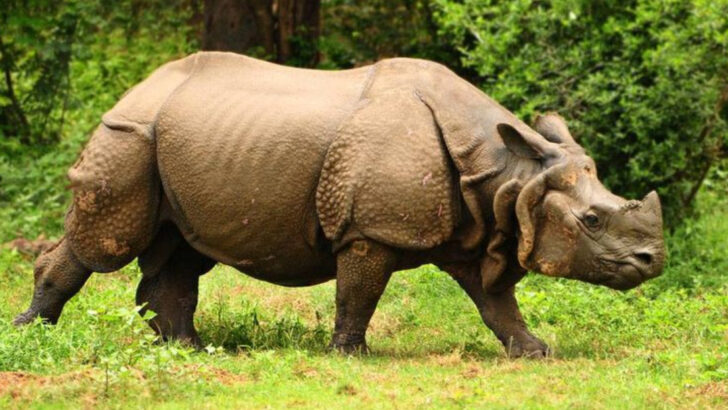Unicorns weren’t born in fairy tales—they were pulled from real life, one strange horn at a time.
Long before glitter and rainbows hijacked the myth, people spotted something wild: animals with a single horn, wandering deserts, forests, and frozen seas. No magic wands. Just weird, wonderful biology.
From shaggy beasts that ruled the Ice Age to deep-sea oddballs that look like unicorns gone rogue, nature has always had a flair for the dramatic.
Ready to meet the real-life creatures that sparked a legend? Some are majestic. Some are terrifying. All are unicorn material.
Indian Rhinoceros
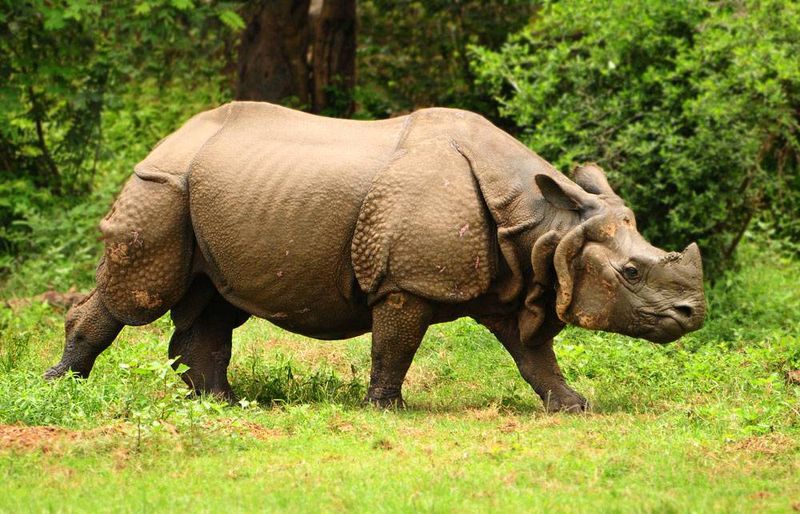
The Indian Rhinoceros, with its massive body and iconic single horn, roams the grasslands of India and Nepal. Its tough, armor-like skin adds to its formidable appearance, making it a sight to behold. Despite its intimidating look, this gentle giant is primarily a grazer, content to munch on tall grasses and leaves. Often found bathing in mud pools, these rhinos enjoy a lifestyle of leisure. Historically, their horns were thought to possess medicinal properties, leading to a decline in their population due to poaching. Conservation efforts now aim to protect these magnificent creatures.
Narwhal

The Narwhal, often dubbed the “unicorn of the sea,” dazzles with its unique spiral tusk. This Arctic dweller uses its tusk for a variety of purposes, from sensing the environment to breaking ice. Narwhals travel in groups, navigating the chilly waters with ease. Their tusks, actually elongated teeth, have fascinated humans for centuries, fueling legends of unicorns. Inuit communities have long revered the Narwhal, weaving it into their folklore and traditions. Today, they remain a symbol of the mysterious Arctic, captivating the imaginations of all who encounter them.
Addax Antelope
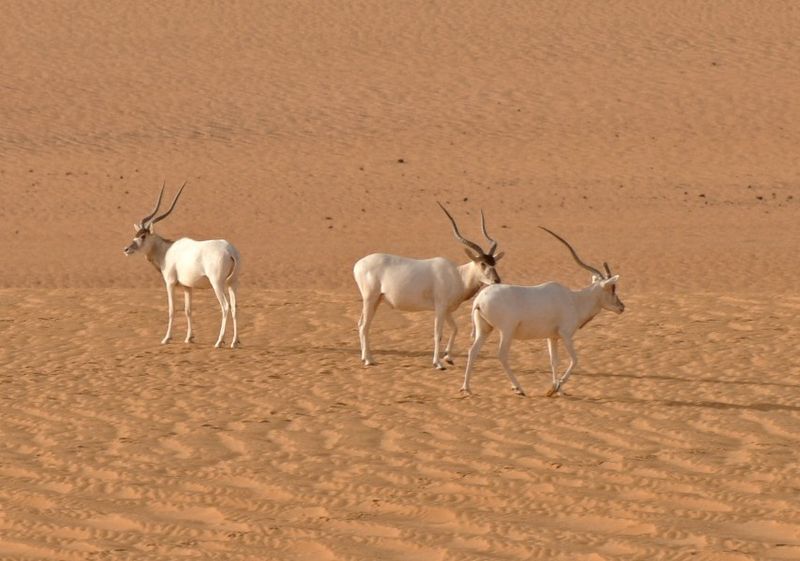
With its strikingly twisted horns, the Addax Antelope is perfectly adapted to harsh desert life. Found in the Sahara, these antelopes have pale coats that reflect the sun’s rays, keeping them cool. Their horns, spiral and singular, have inspired ancient tales of mystical creatures. Addaxes are nomadic, traveling vast distances in search of scarce water and vegetation. Unfortunately, they face severe threats from habitat loss and hunting. Conservationists strive to protect their dwindling numbers. Their resilience and beauty continue to inspire awe among those fortunate enough to see them.
Saola
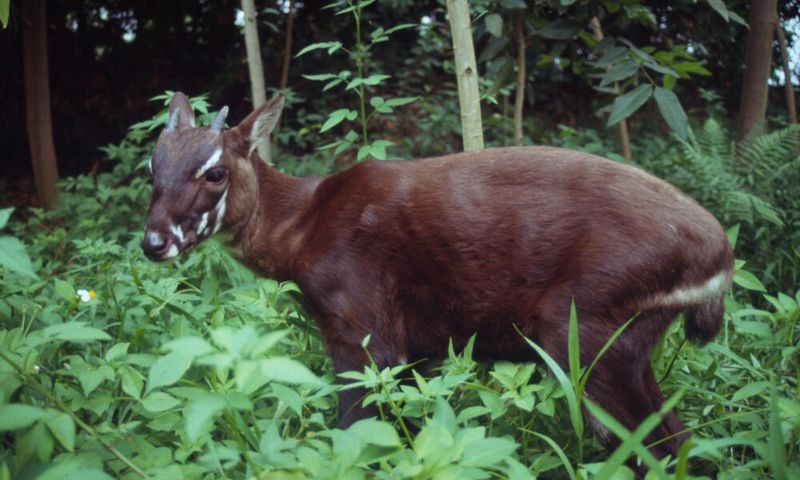
Dubbed the “Asian unicorn,” the Saola remains one of the rarest animals on Earth. Living in the Annamite Range of Vietnam and Laos, this mysterious creature is seldom seen by humans. Its single, slender horn and gentle eyes lend it an air of enchantment. Saolas are solitary and elusive, preferring the deep forest’s tranquility. Unfortunately, their rarity makes them vulnerable to hunting and habitat destruction. Conservationists have made it their mission to protect this enigmatic species, hoping to unravel more of its secrets before it’s too late.
Oryx
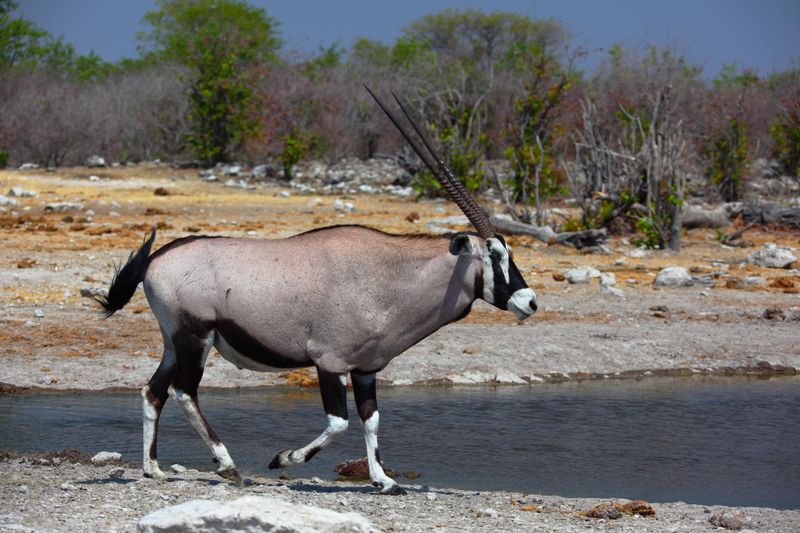
The Oryx, with its elegant, straight horn, is a true icon of the African savannas and deserts. This graceful antelope is built for endurance, able to survive in arid conditions with minimal water. Their horns, often mistaken for unicorn horns, have made a mark on various cultures’ lore. Oryxes travel in herds, showcasing their impressive horns during mating displays and territorial disputes. These majestic animals continue to thrive due to their adaptability, serving as a reminder of nature’s resilience and beauty. The Oryx’s striking appearance never fails to captivate.
Rhinoceros Beetle

Don’t let its size fool you; the Rhinoceros Beetle is a powerhouse in the insect world. Sporting a horn reminiscent of its namesake, this beetle uses it to battle for mates and establish dominance. Found across the globe, these beetles are incredibly strong, capable of lifting objects many times their weight. Despite their fearsome appearance, they’re harmless to humans, feeding primarily on fruit. The Rhinoceros Beetle’s impressive horn and strength have made it a subject of fascination and study. It’s an extraordinary creature in its own right, worthy of attention.
Chiru
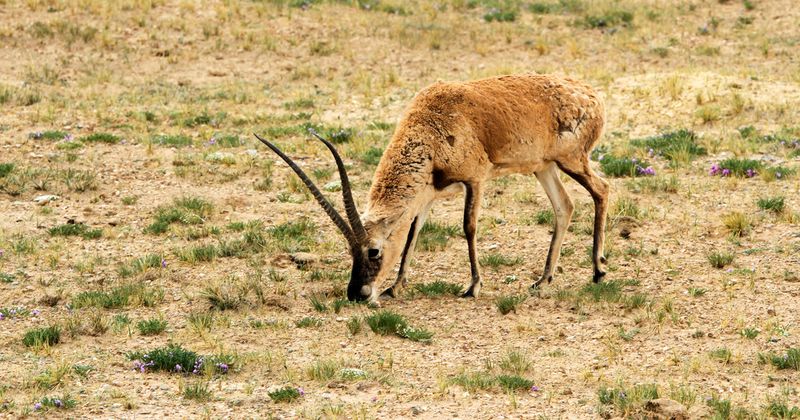
High on the Tibetan Plateau, the Chiru, or Tibetan Antelope, dances through the cold winds. Its horns are slender and slightly curved, giving it an elegant appearance. Adapted to extreme altitudes, Chirus have thick fur to protect against the chill. These antelopes are revered by locals, featuring in Tibetan art and folklore. Unfortunately, their beauty has attracted poachers, leading to a decline in numbers. Conservation efforts focus on protecting their habitat and curbing illegal hunting. The Chiru remains a symbol of the wild, untamed beauty of Tibet’s landscapes.
Unicornfish
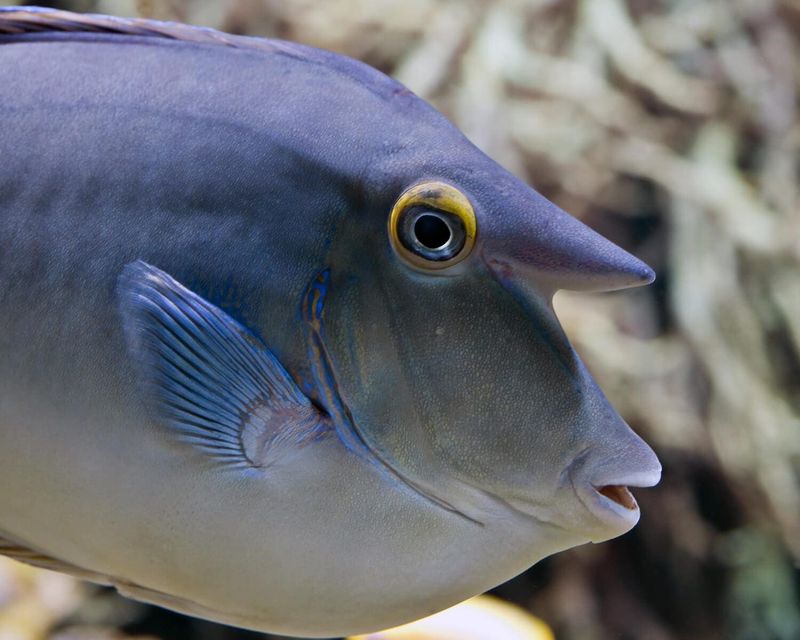
The Unicornfish, aptly named for the horn-like protrusion on its forehead, is a marvel of the ocean. Found in tropical reefs, these fish are known for their vibrant colors and unique appearance. The “horn” is not actually used for defense but is thought to play a role in mating rituals and social interactions. Unicornfish swim in schools, gracing the reefs with their presence. Their peculiar look has captured the fascination of divers and marine enthusiasts alike. These fish remind us of the ocean’s endless wonders and the magic beneath the waves.
Elasmotherium
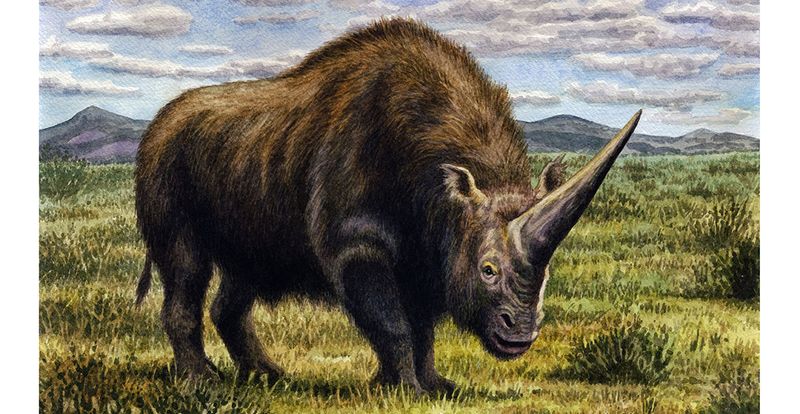
The Elasmotherium, an extinct giant, once roamed the steppes of Eurasia. Often called the “Siberian unicorn,” this enormous creature boasted a single, colossal horn. Weighing several tons, it was one of the largest mammals of its time. Scientists believe the horn was used for digging and foraging, a tool for survival in harsh climates. Despite its size, the Elasmotherium was a herbivore, feeding on grasses and shrubs. Fossils have sparked imaginations, leading to tales of mythical beasts. It stands as a testament to Earth’s diverse evolutionary history.
Okapi
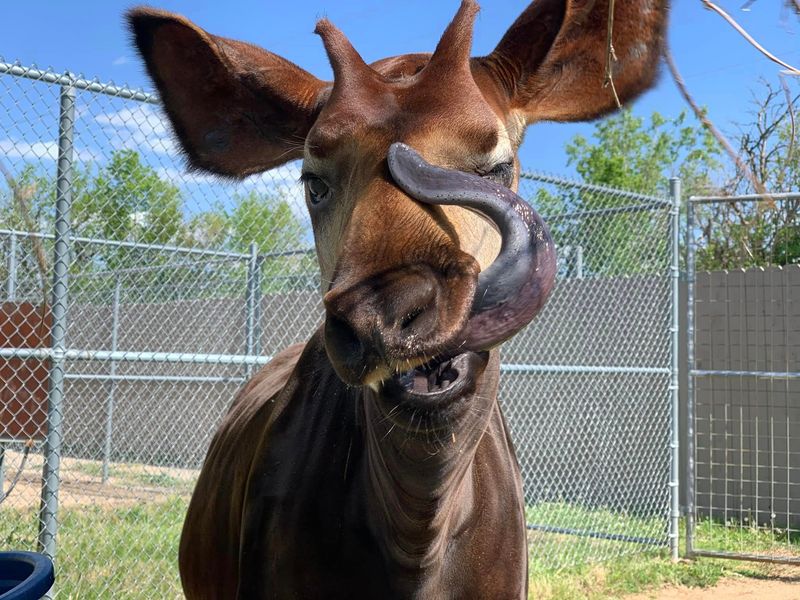
The Okapi, with its zebra-like stripes and giraffe-related lineage, is a mystery of the Congo’s forests. It possesses a small, skin-covered horn on its forehead, adding to its unique appearance. Okapis are solitary creatures, moving silently through dense vegetation. Their elusive nature often makes them hard to spot, even by locals. Despite their rarity, Okapis play a crucial role in the ecosystem, aiding in seed dispersal. Conservationists work tirelessly to ensure their survival, recognizing the Okapi’s importance in the rich tapestry of jungle life.
Japanese Serow
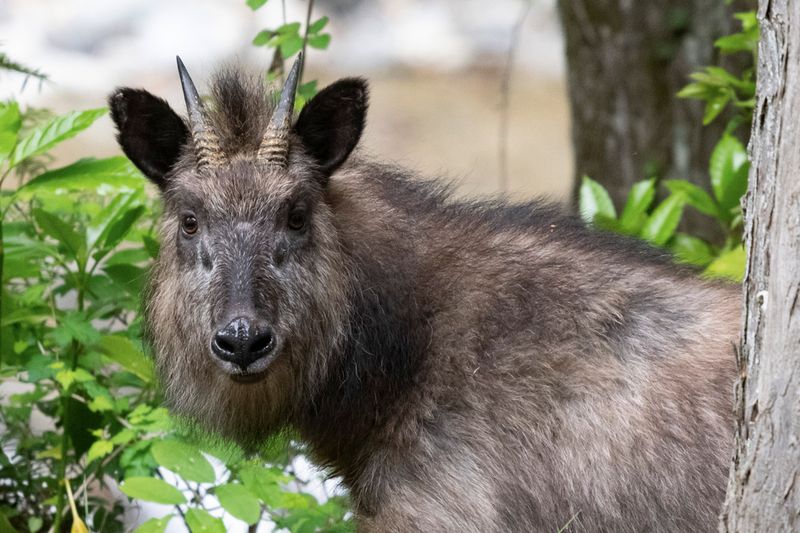
In the rugged mountains of Japan, the Japanese Serow stands as a symbol of grace and resilience. With a small horn adorning its head, this goat-antelope hybrid navigates rocky landscapes with ease. Serows are solitary animals, often seen grazing on shrubs and grass. Their dense fur provides warmth against the cold mountain air. Revered in Japanese culture, they often appear in art and folklore. Efforts to protect their natural habitat have been successful, ensuring that these majestic creatures continue to thrive. The Serow embodies the spirit of the Japanese wilderness.
Sable Antelope
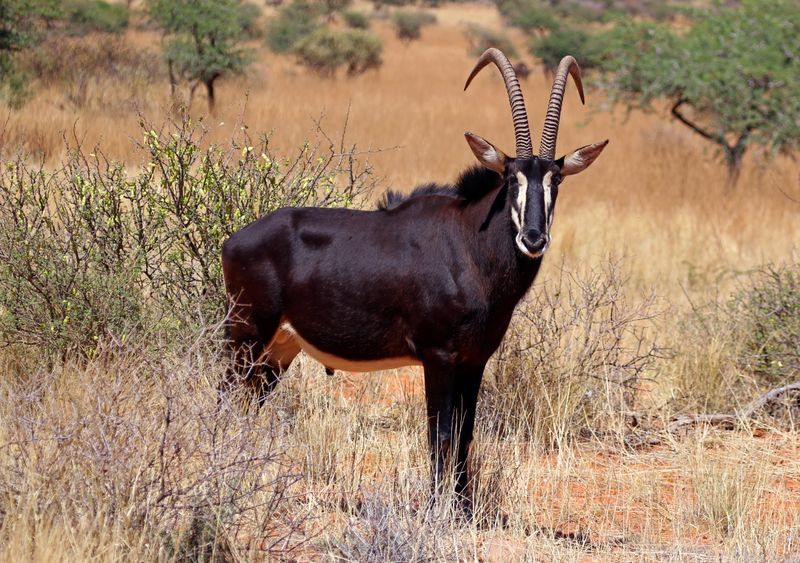
Known for its regal appearance, the Sable Antelope sports long, curved horns that add to its majesty. This striking antelope is native to the woodlands and savannas of Africa, where it grazes on grass and leaves. Sables are social animals, forming herds led by a dominant male. Their horns are used for defense and in territorial battles. With their striking black coats and impressive horns, Sables have been celebrated in African folklore. Conservation programs aim to protect their populations and preserve their iconic status in the wild.
Markhor
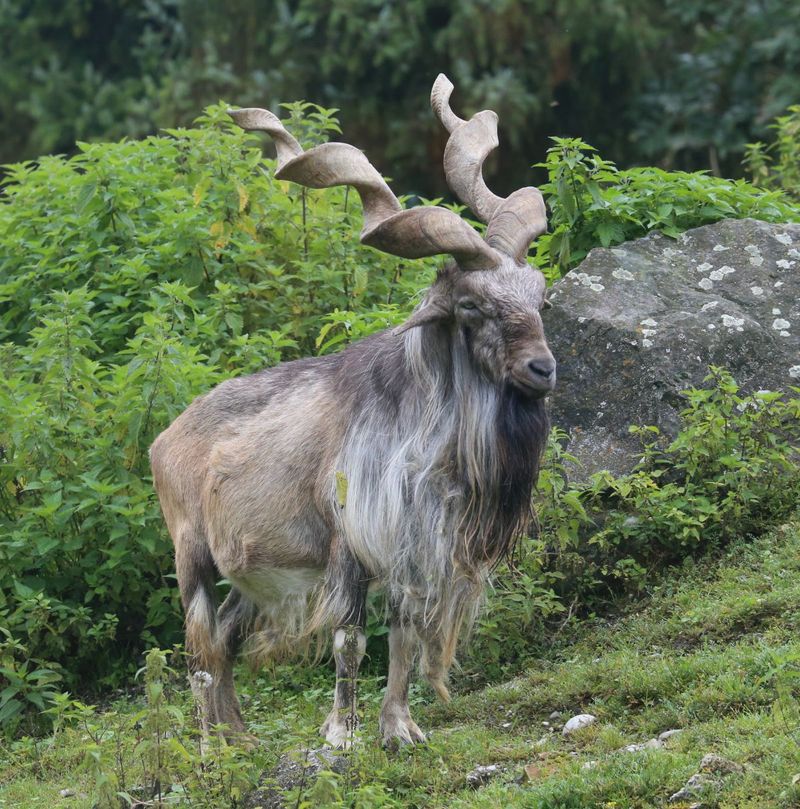
The Markhor, Pakistan’s national animal, is as majestic as the rugged mountains it inhabits. Its spiral horns are a marvel of nature, twisting upwards in a display of strength and beauty. Markhors are skilled climbers, adept at navigating steep terrain. These herbivores are social, often seen in small groups grazing on mountain vegetation. Their horns have made them a target for hunters, leading to conservation efforts aimed at their protection. The Markhor’s grace and resilience have made it a symbol of mountain wildlife, inspiring awe and admiration.
Scimitar Oryx
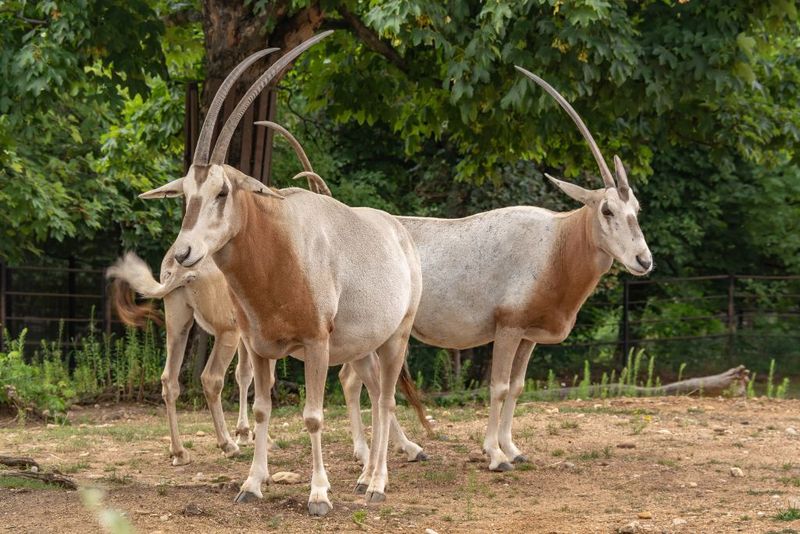
Once roaming the vast deserts of North Africa, the Scimitar Oryx is now primarily found in reserves. Its long, backward-curving horns resemble scimitar swords, giving it a distinctive appearance. Adapted to arid environments, Scimitar Oryxes can go long periods without water. These antelopes live in herds, using their horns for protection and hierarchy establishment. Although extinct in the wild, reintroduction programs aim to restore their populations. Their striking horns and survival story have captured the hearts of many, symbolizing hope for endangered species.
Long-horned Beetle
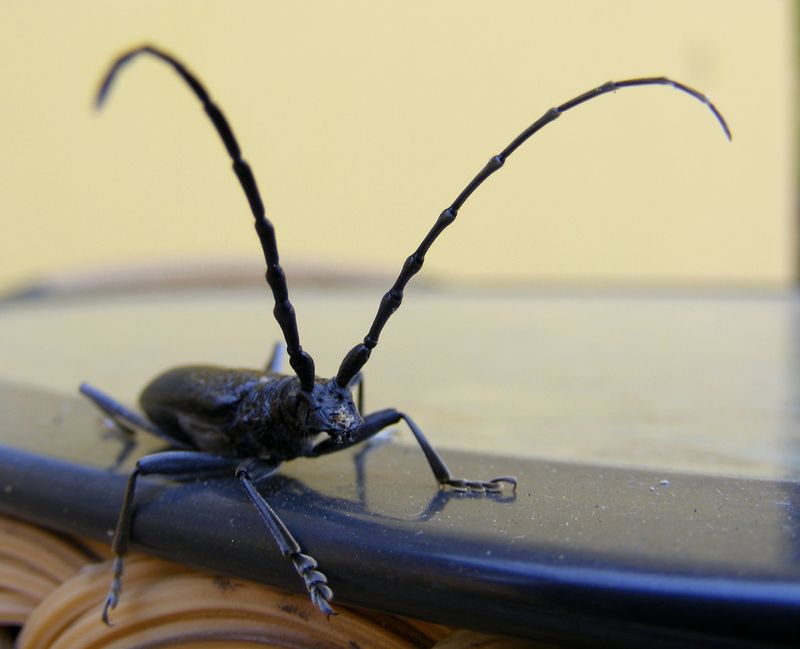
The Long-horned Beetle is an insect of intrigue, with antennae that resemble horns. Found around the world, these beetles vary in color and size. Their ‘horns’ are actually long antennae, used for sensing their environment. Despite their small size, they’re vital for ecological balance, aiding in decomposing deadwood. Long-horned Beetles are often mistaken for having horns, contributing to their mythical status. Their unique appearance and role in nature make them a subject of study for entomologists. They stand as a testament to the complexity of the insect world.

